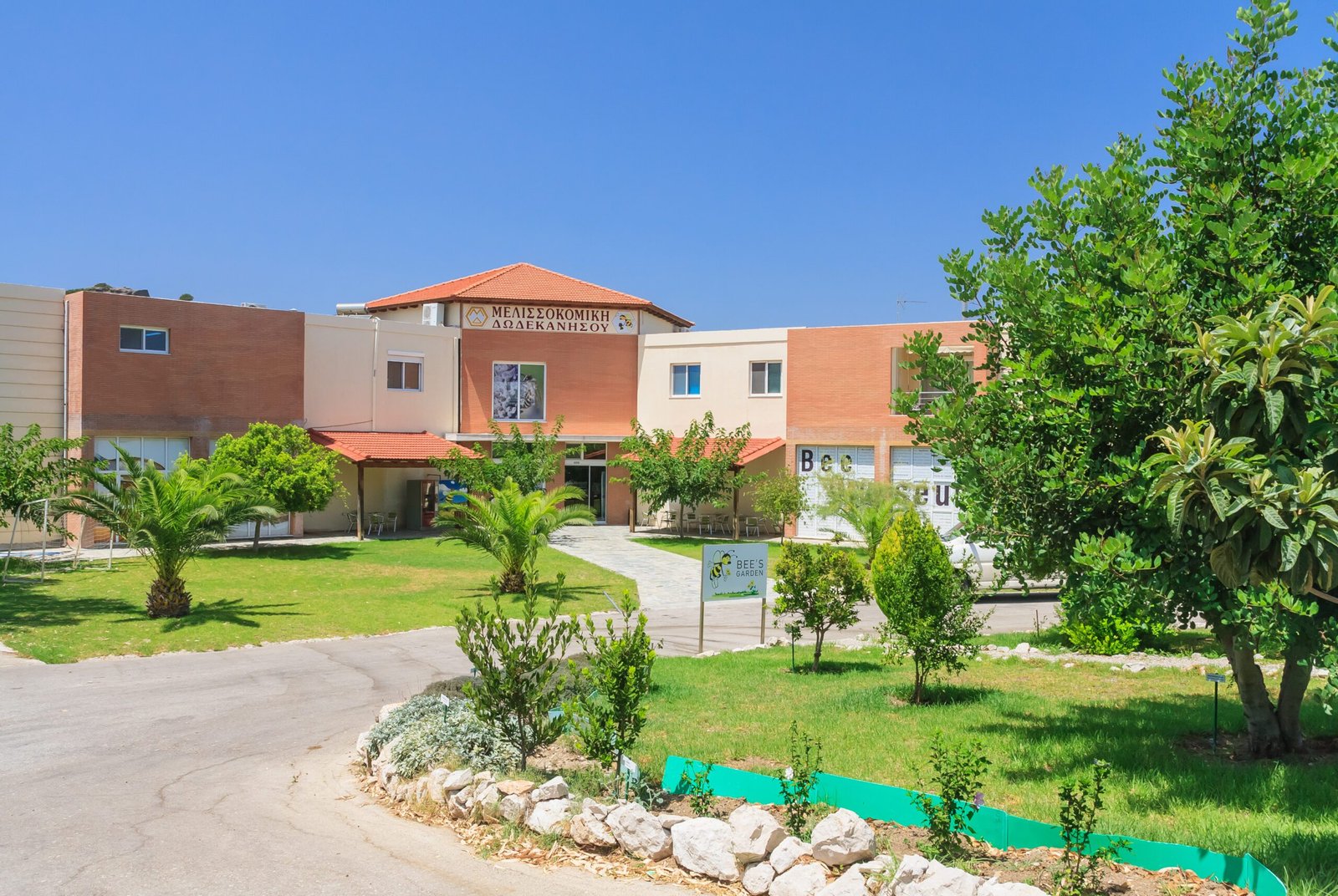Bee Museum Rhodes stands near Pastida village, about 5 kilometers from the airport. It is the only museum of its kind in Greece. This modern facility explains the importance of bees and beekeeping.
The museum covers all aspects of beekeeping. Visitors learn how ancient Greeks harvested honey. They see how traditional and modern methods differ. What’s more, exhibits include old tools, wooden hives, and photos from the early 20th century.
Live bee colonies attract much attention. Glass observation hives let guests watch bees at work. Visitors see how they build honeycombs, store pollen, and serve the queen. Staff explain the bees’ roles and how a hive functions. As a result, these displays offer a rare close-up look at bee society.
The museum also includes interactive exhibits. Children enjoy touchscreens and digital games. These features explain pollination, bee anatomy, and more. Families find the museum both fun and educational.
A special room highlights bee products. Here, visitors learn about honey, pollen, royal jelly, wax, and propolis. Information panels explain their uses in food, medicine, and cosmetics.
Outside, a garden grows local flowers and herbs. Bees collect nectar from these plants. The garden shows how local nature supports healthy hives. Also, signboards name the plants and describe their role in honey production.
At the end of the visit, the gift shop offers a wide selection. Local honey, sweets, skincare products, and souvenirs are all for sale. All items come from regional producers and many visitors enjoy tasting honey before buying a jar to take home.
The museum stays open year-round, except on major holidays. Summer hours run longer than winter ones. Parking is free and easy to find. Moreover, the building is accessible to people with mobility needs.
In conclusion, Bee Museum Rhodes combines science, culture, and nature. With hands-on learning and authentic local products, it makes a great stop during a trip around central Rhodes.



Comment (0)